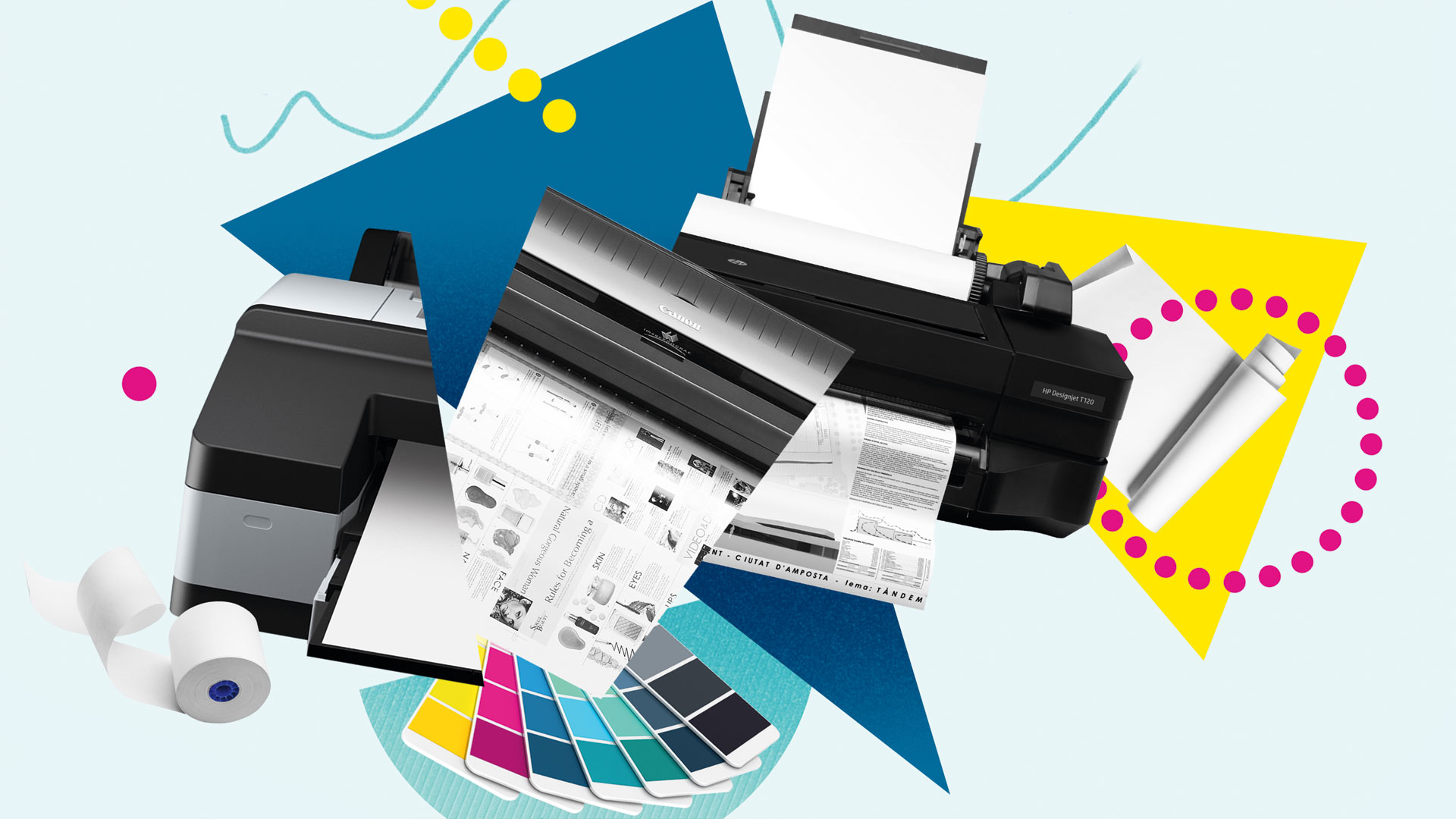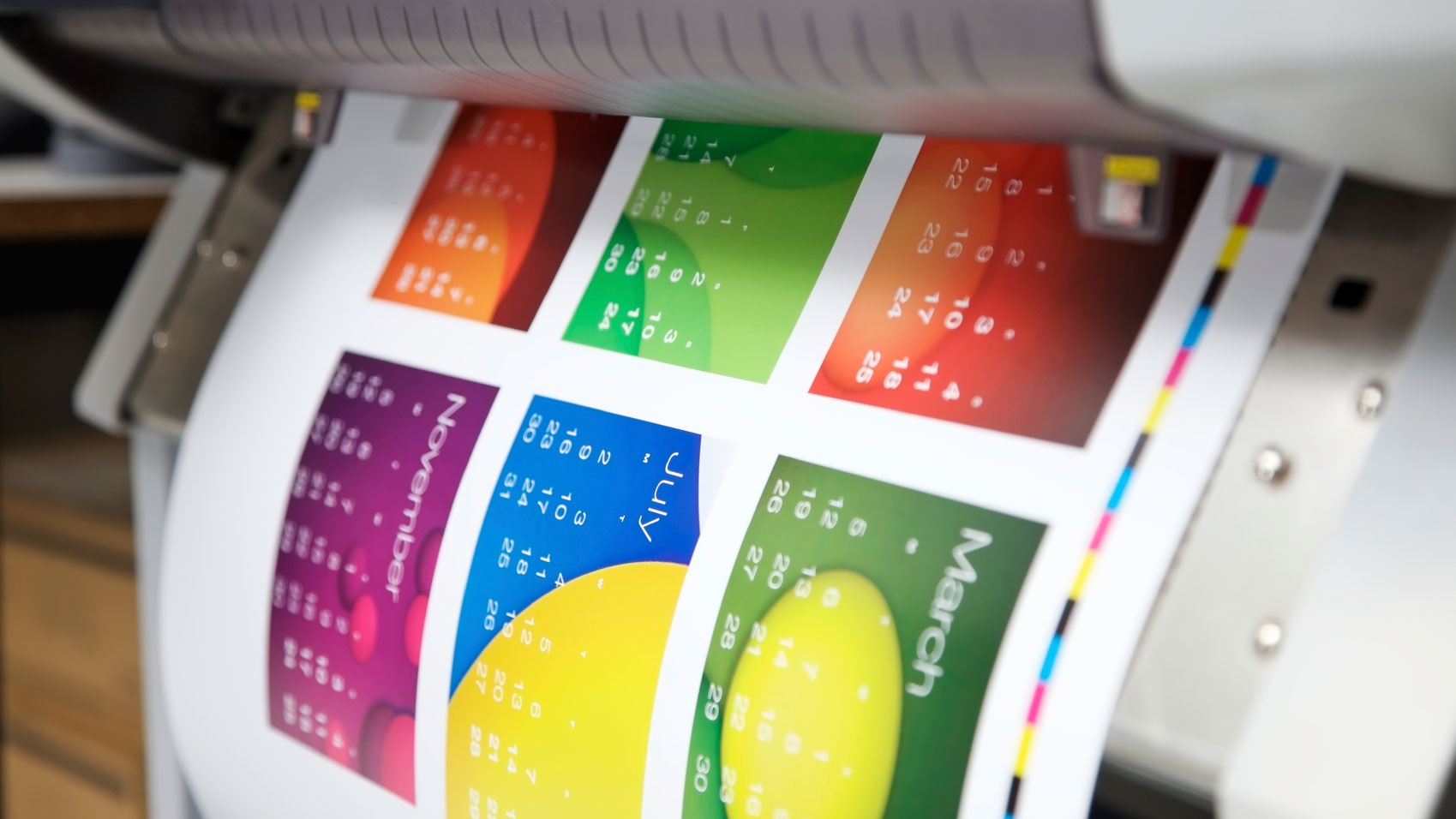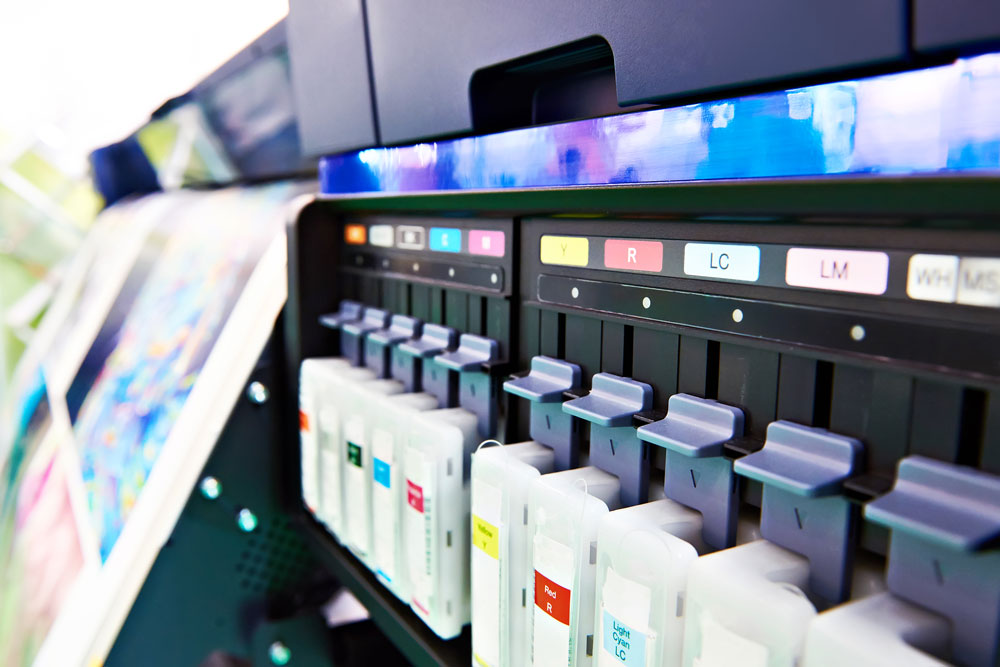How to choose a high-end printer: A guide
Your own high-end printer can mean no more nasty surprises when a job comes off the press.
In theory, knowing how to choose a high-end printer will be useful to everyone working in the creative industries, whether you're an artist, creative director or graphic designer. Print technology, with its countless options and confusing jargon, is a taxing field to master, but it's an important one. Having a printer that runs out accurate test proofs is by far the best way to ensure there are no nasty surprises when a job comes off the press.
A good proof also helps win over those clients who struggle to visualise what the completed project will look like. Never again will you have to explain: "It'll look much better once it's back from the printers." So, if you think you'll see a return on your investment from the satisfied clients and time saved, it's definitely worth considering. If you're not sure, you could check out our pick of the best printers as well.
Choosing a printer

Simple office and photo printing, proofing, and generating art prints all have different requirements. While colour laser printing is a popular option for general office work, inkjet printers still dominate the graphics market, with the big three manufacturers – HP, Canon and Epson – all offering large-format models.
For inkjet printing on paper, the main choice is between dye-based and pigment-based inks. Although this has been changing over time, dye-based inks are traditionally brighter and offer a wider range of colours, while pigment-based inks are more fade-resistant. If you need to print on fabric or metal, you will also need to explore other alternatives, such as solvent-based and latex inks, although we won't be discussing them in detail here.
Whichever technology you choose, the larger and higher-quality the printer, the better. The larger the printer, the wider the range of work you will be able to reproduce. Larger printers also give you the option to produce art prints on canvas to order, and selling these is a good way to make the printer pay for itself.
Whichever technology you choose, the larger and higher-quality the printer, the better
The higher the print quality, the more accurately you will be able to reproduce fine details – and, crucially, colours. Colour reproduction is the single most important aspect of print management. Proofs must be as accurate as possible, and contain the widest possible range of colours.
This is particularly important for projects using Pantone or similar standardised colour-matching systems. It isn't always possible to achieve perfection, as anyone who has had a run-in with a commercial print shop knows, but some of the newer Epson printers achieve 98 per cent Pantone colour coverage, certified by Pantone itself.
Get the Creative Bloq Newsletter
Daily design news, reviews, how-tos and more, as picked by the editors.

In practice, for really accurate proofing, you will probably need a 12-ink system capable of generating at least A3 prints: ideally, A2, A1 or larger. High-end printers start around £500 – less if you're willing to try a second-hand or refurbished model – but models above the £1,000 mark usually provide the best value.
While this represents a significant initial outlay, the more you use a printer, the better value it becomes. Paper and ink typically become cheaper when bought in volume, so if you use your printer heavily every day, it may be cheaper in the long run to buy a larger unit – even if you never use its maximum print size.
Some printers now track the cost of each job using built-in cost-management software so you can calculate your ROI, but realistically, you won't get a good estimate of running costs until you've been using the printer for a while. Ask around. If studios or designers similar to you have a printer they like, find out which model it is and how much it costs them to run.
Finally, remember to check whether you have space for the printer you're thinking of buying: models capable of generating A2 or larger output take up a fair amount of room. Check the printer's dimensions with all the extras fitted, including roll feeders and trays. Remember that a big printer makes a bit of racket too, and weighs around 50kg.
Choosing ink and paper
Setting up full end-to-end colour profiling – matching what you see on your screen to your printer, paper and ink – means you know exactly what to expect back from the print shop. This will save you time and money – and hopefully, your sanity.
Once you have chosen a printer, the next thing to consider is the paper stock. Paper plays an even more important role than you might think in determining print quality. With the right kind of premium papers, even a basic printer can produce good results. Pair them correctly with a high-end printer and you're flying.

Manufacturers tailor their paper stock to their printers, so using own-brand paper is a simple way to guarantee good results. However, using printer profiles allows you to achieve equally good results with paper from different manufacturers – useful for more creative projects for which you need a special stock.
This all hinges on good calibration. Once you know what you're doing, calibrating a printer should be no more challenging than calibrating a monitor. You can profile output with a hand colorimeter, or, better still, buy a model with built-in colorimeter. As well as simplifying set-up, a printer with built-in calibration will improve colour accuracy.
Where you keep your printer and your paper is also important – temperature, pressure and humidity all play a part in the quality of the end result. Paper should be kept somewhere dry, dark and cool: ideally somewhere on-site, to save you having to run out to buy more halfway through a project.
Finally, you will also need to choose inks. Here, sticking with your printer manufacturer's own brand almost always gives the best results.
Not just practical, but fun
Once you have the equipment to generate your own large-format prints, you'll wonder how you managed without it. Upgrading the way in which you print and proof is not only a sound financial investment but also a lot of fun.
The creative industries are full of long hours spent working on things that exist only on screens and in computers. Printing and proofing rewards your hard graft with a quality product that you can hold in your hands immediately.
Illustration: Ciara Phelan
This article originally appeared in Computer Arts.
Read more:

Thank you for reading 5 articles this month* Join now for unlimited access
Enjoy your first month for just £1 / $1 / €1
*Read 5 free articles per month without a subscription

Join now for unlimited access
Try first month for just £1 / $1 / €1
Gary Evans is a freelance journalist and travel writer. He is a former staff writer for Creative Bloq, ImagineFX, 3D World, and other Future Plc titles.
